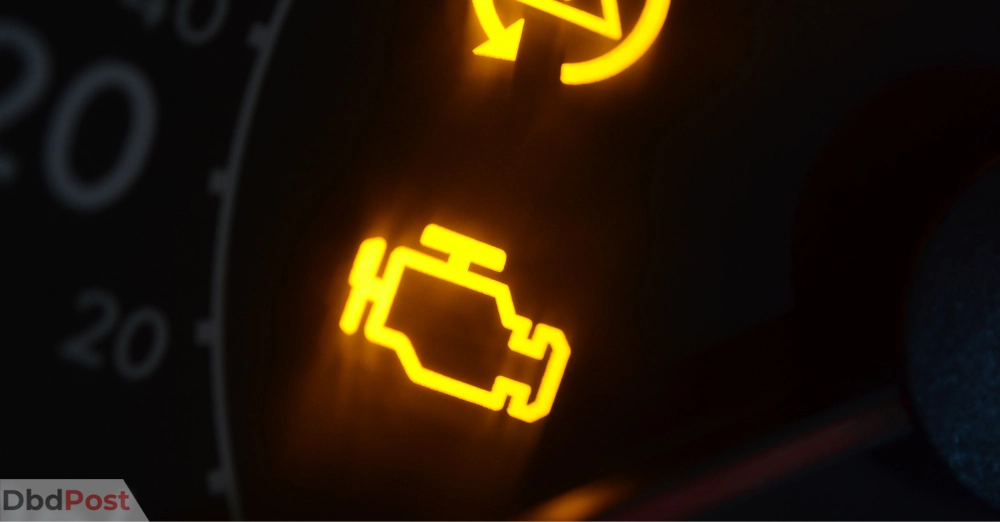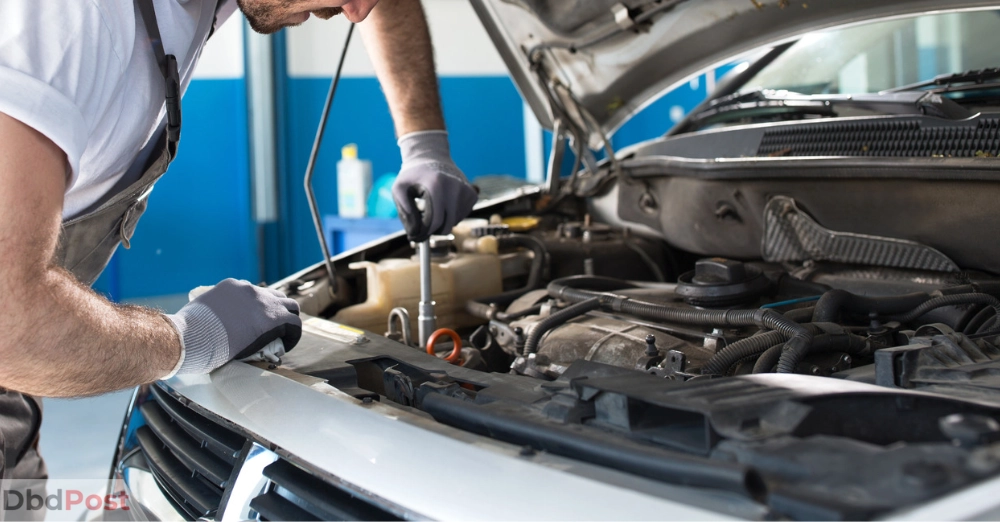The Volkswagen check engine light is a warning that there’s an issue with the car’s engine or emission system. This light shows that the onboard diagnostic system has detected a fault.
The check engine light serves as a critical warning system, notifying drivers of possible issues with the vehicle. The common reasons for Volkswagen engine warning lights are faulty oxygen sensors, mass air flow sensors, failing catalytic converters, and more.
In this Dbd guide, we have included all the information on the causes of the engine warning light and its resetting process. We consulted with manufacturers and mechanics to identify common problems and solutions.
What does the Volkswagen check engine light mean?

The check engine light in a Volkswagen car will turn on if there is something wrong with the engine or emission system. Volkswagen has a TSI engine as TSI is its award-winning technology for petrol engines.[1]Volkswagen, “Engines performance, https://www.volkswagen.com.my/technology/engines-performance” But it might still get an engine light flashing and might fail the emissions test.
The engine malfunction indicator can indicate problems with various parts, such as the oxygen sensor, gas cap, ignition coils, catalytic converter, or fuel tank. When these issues occur, it can reduce the car’s gas mileage and performance.
If the check engine light is on but steady, the problem is not critical but needs to be fixed as soon as possible. However, if the check engine light starts flashing, immediate attention is required to prevent expensive repairs and further damage to the car.
To avoid severe car problems, it’s essential to address the root cause of the issue as soon as possible. Once the problem is fixed, the check engine light should turn off.
Neglecting to fix the problem could lead to more severe issues. So, taking care of the issue immediately is best to avoid further damage.
Common causes of a Volkswagen check engine light

When the Volkswagen check engine light comes on, it states various problems related to the engine or emissions system. Here are some of the common causes:
- Faulty oxygen sensor
- Damaged or loose gas cap
- Malfunctioning ignition coil
- Failing catalytic converter
- Problems with the fuel tank or fuel injectors
- Issues with the spark plugs or spark plug wires
- Low engine oil pressure or low oil level
- Defective mass airflow sensor
- Problems with the exhaust system
- Faulty engine control module (ECM)
If the check engine light comes on, you could experience reduced performance and low fuel economy. Additionally, the catalytic converter should be replaced if it fails. It turns carbon monoxide emissions into carbon dioxide.
Moreover, fixing these issues promptly is crucial to avoid further damage and ensure the vehicle performs optimally.
What to do when the Volkswagen check engine light comes on
If the check engine light in your Volkswagen car comes on, it’s crucial to take it to an auto repair shop as soon as possible.
Ignoring it could cause reduced fuel efficiency and car performance, severely damaging the engine and emission system.

Check the gas cap
Firstly, check the gas cap to ensure it’s tight and secure. If it’s not, the check engine light may turn on. Simply tightening the gas cap may resolve the issue.
Have a mechanic diagnose and repair the issue
If the check engine light persists after checking the gas cap, it’s crucial to have a qualified mechanic diagnose and repair the problem. Driving with the check engine light on could impact the car’s performance and lead to costly repairs.
Preventative maintenance
Regular car maintenance can help prevent issues affecting your car’s performance. Common problems impacting the car’s performance include rough running, misfiring, hesitation when accelerating, and reduced gas mileage, emissions, and power.
By following these steps and addressing the root cause of the problem, you can prevent further damage and maintain optimal vehicle performance.
How to reset the Volkswagen check engine light?
When you fix the problem causing the Volkswagen engine warning light, reset the engine light to maintain optimal car performance. Resetting the engine light helps to prevent it from continually flashing, and it helps to identify any new problems.
Here is a detailed guide on how to reset the Volkswagen check engine light for the smooth running of the vehicle:
Step 1: Turn off the engine
To reset the check engine light after resolving the issue, you need to take some safety measures. Start by turning off the engine and allowing it to cool down for a few minutes. It helps to avoid any risk of burns.
Step 2: Find the battery
To begin, find the car battery, which provides power to the electrical system. Typically, it’s situated in the engine compartment or trunk. However, the location may vary depending on the car’s make and model.
Step 3: Disconnect the negative terminal of the battery
To avoid electrical problems or shocks, it’s crucial to use a wrench or socket set. Use these tools to loosen and remove the negative terminal of the battery. Also, avoid touching the positive terminal with the wrench or socket set.
Step 4: Wait for a few minutes
To reset the Volkswagen check engine light, start by disconnecting the battery. After disconnecting, wait a few minutes to discharge any residual electricity. It ensures that the system is fully reset and ready to go.
Step 5: Reconnect the negative terminal
To reset the Volkswagen dashboard warning light, reconnect the negative battery terminal. Make sure to tighten it hard and check that the connection has no corrosion.
Step 6: Start the engine
Once you’ve made the necessary repairs, start the engine and let it run for a few minutes. This will help you ensure that everything is working perfectly. It includes the electrical system and the engine’s performance.
Step 7: Check the dashboard for any warning lights
After resetting the check engine light, check the dashboard for warning lights. The check engine light should be turned off, meaning the system has been reset. Also, don’t forget to monitor your car’s performance and promptly address any problems to prevent further damage.
Related Stories
- Check this guide to know everything about Nissan Check Engine Light.
- Check this guide on Hyundai Check Engine Light – here.
- Find out everything about Dodge Check Engine Light with our guide.
- If your Ford Check Engine Light is on, check our guide for steps to fix it.
- Click on this guide on Buick Check Engine Light to know everything about the issue.
FAQs
Can I continue to drive my Volkswagen with the check engine light on?
Driving your Volkswagen with the check engine light on is not recommended. The light signals an issue with your engine that requires fixing. Continuing to drive can cause more harm to your car’s engine, leading to costly repairs.
Why is the Check Engine Light on in my Volkswagen?
The check engine light in your Volkswagen may be on due to various issues. A faulty oxygen sensor, loose gas cap, malfunctioning catalytic converter, or other engine-related problems are some common causes. It’s important to have the issue diagnosed and repaired promptly to avoid further damage and costly repairs.
The Volkswagen check engine light is an important system that signals any problems with the engine. We hope our guide has provided you with all the necessary information you need to know about the Volkswagen warning light.
- 107shares
- Facebook Messenger
About the author
DbdPost Staff is a team of writers and editors working hard to ensure that all information on our site is as accurate, comprehensive, and trustworthy as possible. Our goal is always to create the most comprehensive resource directly from experts for our readers on any topic.


![How Much Does it Cost to Wrap a Car in [year]? how much does it cost to wrap a car-feature image](https://dbdpost.com/wp-content/uploads/2021/09/how-much-does-it-cost-to-wrap-a-car-feature-image-150x150.jpg)
![How to Delete Shein Account? ([year] Edition) feature image-how to delete shein account](https://dbdpost.com/wp-content/uploads/2021/10/feature-image-how-to-delete-shein-account-150x150.png)
